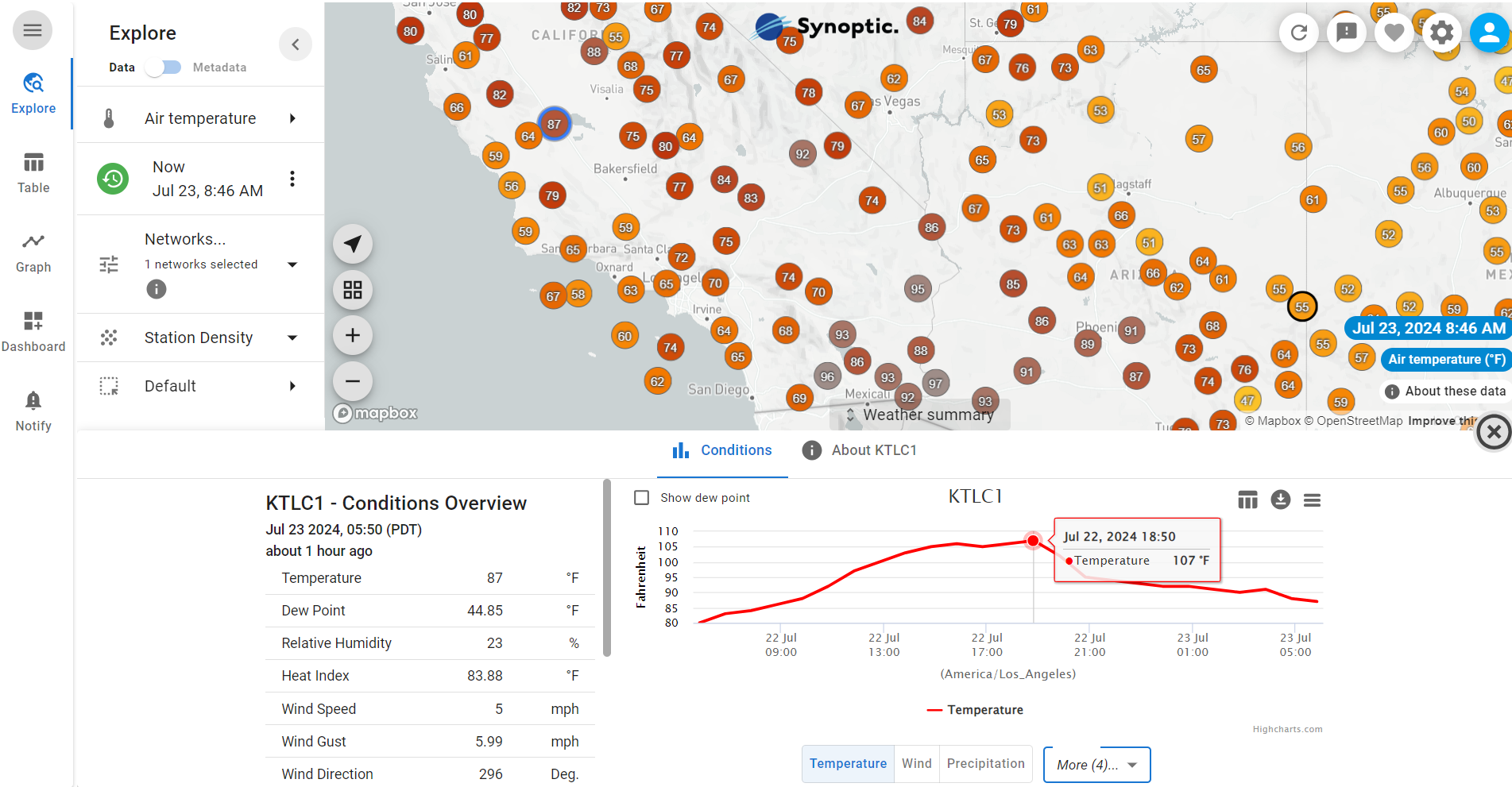When temperature, humidity, wind speed, and precipitation conditions align unfavorably, wildfires can ignite and spread rapidly. With the risk of wildfires occurring in many parts of the world, accurate and timely information is critical. Real-time data plays a pivotal role in understanding, predicting, and managing fire weather conditions, ultimately saving lives and protecting property.
Synoptic Data aggregates data for over 320 networks around the world, including networks that monitor fire weather. The RAWS (Remote Automated Weather Station) network is especially valuable for fire weather monitoring. RAWS units are strategically placed in remote locations throughout the United States, Puerto Rico, Guam, and the U.S. Virgin Islands.
The stations measure all the key elements for monitoring fire weather – wind speed and direction, air temperature, precipitation, relative humidity, solar radiation, and fuel moisture. Data is collected hourly, providing fire and resource managers critical data for assessing fire risk and monitoring conditions during an event.
Synoptic Data is proud to offer this data through our Weather API and Data Viewer products. As a Public Benefit Corporation and B-Corp company, our mission is to provide easy access to weather and environmental data for all. The data is empowering users for:
- Early Detection and Rapid Response – Real-time data allows for early detection of wildfire-conducive conditions. By monitoring temperature, humidity, and wind patterns in real time, high-risk areas can be identified quickly, enabling rapid and effective deployment of firefighting resources.
- Enhanced Predictive Modeling – Advanced predictive models rely on real-time data to forecast wildfire behavior. Continuously updating models with current weather conditions improves prediction and accuracy, aiding in better planning and resource allocation.
- Improved Public Safety Communication – Real-time data ensures timely and accurate public communication. Emergency alerts and evacuation orders based on current conditions enhance public safety, enabling individuals to make informed decisions and take necessary precautions.
- Resource Optimization – Real-time data provides insights into current fire weather conditions, helping authorities prioritize high-risk areas. This ensures efficient allocation of firefighting crews, equipment, and supplies, maximizing their impact.
- Support for Research and Policy Making – Continuous real-time data monitoring supports ongoing research into wildfire dynamics and effective mitigation strategies. Policymakers can use these data to implement science-based policies that enhance wildfire preparedness and response.
By harnessing the power of real-time data, we can help users to better protect lives, property, and the environment from wildfires. You can view the RAWS network by visiting our Synoptic Data Viewer and selecting the RAWS network from the listing in the Explore tab.
